Food delivery app monetization strategies play a big role in turning a helpful service into a thriving business.
With apps like Uber Eats, DoorDash, and Grubhub leading the way, it's clear there's serious money to be made, but how exactly do they do it?
If you're a startup or entrepreneur thinking about entering this space, understanding these revenue models is key.
From delivery fees and commissions to subscriptions and ads, there are plenty of ways to bring in income.
And the best part? These strategies not only boost profits, they also keep users happy and coming back for more.
In this article, we’ll explore the most successful and scalable strategies used by the top food delivery apps, helping investors to choose the right approach to grow their user base and maximize profits.
Overview of Food Delivery App Monetization
Food delivery app monetization involves using various strategies to generate revenue while balancing user satisfaction and business profitability.
As this food delivery industry becomes increasingly competitive, apps must go beyond basic delivery services and adopt smart revenue models such as delivery fees, restaurant commission, and subscriptions.
Each food delivery app monetization model plays a crucial role in driving income, enhancing user engagement, and fostering brand loyalty.
With the rise of popular features in Uber Eats, DoorDash, and Grubhub, it's crucial for both new and existing apps to implement effective monetization models to stay competitive and support long-term growth.
Recent reports reveal the rapid global expansion of food delivery apps, reflecting their increasing popularity and widespread usage across different markets.
The online food delivery market is expected to generate a staggering US$1.39 trillion in revenue by 2025.
Why Monetizing Your Food Delivery App is Important?
Monetizing your food delivery app is crucial to turning your idea into a sustainable business.
However, while offering a seamless user experience is crucial, so is ensuring the app can sustain itself financially.
That’s where app monetization comes in.
Proper monetization is not just about how a food delivery app makes money.
It’s all about creating a balanced ecosystem.
Below are the key reasons why monetizing your food delivery app is not just important but essential for long-term success.
1. Ensures Business Sustainability
Without a solid revenue generating model, even the most user-friendly app can fail.
Without a solid food delivery app monetization model, even the most user-friendly app can fail.
Developing and maintaining a food delivery app requires ongoing investment in technology, staff, customer support, logistics, and marketing.
Monetization provides the revenue needed to cover these expenses and ensure smooth daily operations.
Whether it’s through delivery fees, restaurant commissions, or subscriptions, earning income from your app is vital to keep the platform running and improving.
2. Supports Continuous Growth and Innovation
To stay relevant in a competitive market, food delivery apps must continuously evolve by introducing new food delivery app features, optimizing delivery logistics, and refining the overall user experience.
Consistent innovation not only attracts new users but also keeps existing customers engaged and loyal to the platform.
Investing in these improvements helps apps stand out and adapt to changing customer expectations, ensuring long-term success.
Revenue generated through monetization enables businesses to invest in:
Without consistent cash flow, innovation becomes difficult, which can lead to stagnation and eventual decline.
3. Builds Trust with Investors and Stakeholders
If you're seeking funding or support from investors, a clear and effective monetization strategy is critical.
Investors look for sustainable business models with predictable revenue streams.
Demonstrating how food delivery apps make money and how they plan to scale builds confidence and attracts more funding opportunities.
A monetized app also shows that your business is not just a tech idea but a viable commercial product with real market potential.
4. Enhances User Experience Through Premium Features
Monetization can also help improve the user experience.
It enables the introduction of premium features, faster delivery options, and personalized services that add real value for users.
Choosing some food delivery app monetization strategies can help you boost customer experience.
Offering some different features like subscription models, for instance, offers loyal users perks like free delivery, exclusive deals, and faster service.
These services not only boost revenue but also foster brand loyalty and keep users engaged over time.
5. Creates Value for Restaurant Partners
Restaurants are a crucial part of the food delivery ecosystem, and a smart monetization strategy benefits both parties.
By offering services like advertising, analytics, and featured listings, platforms help restaurants increase their visibility and boost order volume.
In return, the app earns additional revenue, demonstrating one of the most effective ways to make money from food delivery apps.
A well-designed model not only supports platform profitability but also fosters long-term partnerships and strengthens restaurant loyalty.
6. Strengthens Market Position and Brand Value
A strong monetization strategy does more than just generate revenue; it plays a critical role in shaping your brand’s identity and securing your place in the market.
A well-monetized app reflects business maturity and reliability, building trust among users, restaurant partners, and investors alike.
It also enables you to reinvest in key areas like marketing, user retention, and product improvements, allowing your brand to stay ahead of evolving food delivery app trends.
By consistently delivering value and showcasing financial stability, your app can stand out and achieve sustainable growth, even in a saturated market.
How Food Delivery Apps Make Money?
As the food delivery app industry continues to expand, app developers and investors are actively seeking effective strategies to generate revenue and ensure long-term success.
With industry leaders like Uber Eats, DoorDash, and Grubhub setting high benchmarks, it's crucial to understand the challenges of food delivery app development while implementing smart and diverse monetization models.
Here are 10 proven food delivery app monetization models to help you make money from your food delivery app while delivering value to users and restaurant partners.
1] Delivery Charges
One of the straightforward strategies for food delivery app monetization is charging customers for food delivery.
Delivery charges can be fixed or dynamic, depending on factors like distance, order value, or demand during peak hours.
Some apps use surge pricing to increase delivery fees during busy periods, maximizing revenue.
To maintain transparency and trust, clearly communicate delivery charges during the ordering process.
Offering free delivery over a certain order value can also incentivise larger purchases while balancing customer satisfaction and profitability.
2] Commission from Partner Restaurants
A significant portion of revenue for food delivery platforms comes from charging a commission on each order placed through the app, with restaurants typically paying between 15% to 30% per transaction.
This model comes in as one of the most effective and different ways to make money from your food delivery app, as it benefits both parties; the restaurant gains visibility and increased orders, while the platform earns for facilitating transactions and managing logistics.
To sustain this approach, it's crucial to maintain strong relationships with restaurant partners by consistently delivering value in return for the commissions they pay.
3] Subscription Plans for Users
Implementing a subscription-based model is a powerful way to generate steady, recurring revenue while rewarding loyal users with added perks.
Services like Uber Eats Pass and DoorDash DashPass offer benefits such as free delivery, exclusive discounts, and priority support, making them highly attractive to frequent customers.
This approach not only helps users save money but also fosters long-term loyalty and engagement.
If you're planning to create a food delivery app, incorporating a well-structured subscription model can enhance user retention and add significant value to your overall monetization strategy.
4] Freemium Model with Premium Features
The freemium model enables users to access the core functionality of the app at no cost while offering premium features such as faster deliveries, VIP customer support, or advanced order tracking for an additional fee.
By providing enhanced experiences through in-app purchases, this approach gives users a compelling reason to upgrade.
As part of a well-rounded food delivery app monetization strategy, the freemium model effectively caters to convenience-focused users who are willing to pay for a smoother and more personalized experience.
5] In-App Advertising
In-app advertising lets food delivery apps earn revenue by displaying relevant ads without directly charging users for access or features.
It is one of the most effective on-demand food delivery app monetization strategies that allows users to generate revenue without placing a financial burden on users.
By featuring relevant ads from third-party businesses, local restaurants, or food brands, your app earns revenue through impressions and clicks.
Native ads and sponsored listings blend seamlessly into the app design, preserving user experience.
This approach not only provides a steady income stream but also opens the door for valuable brand partnerships.
6] Featured Listings and Sponsored Restaurants
Restaurants aiming to stand out from competitors can pay for premium placement in search results or homepage sections.
These sponsored listings boost visibility and often lead to increased order volumes.
As part of a broader food delivery app monetization strategy, this model allows platforms to earn additional revenue while helping restaurants reach their marketing objectives.
Including performance analytics can further encourage participation.
7] Restaurant Marketing Services
Restaurant marketing services offer tools like promotions and analytics to help eateries boost visibility, drive sales, and attract more customers.
These may include running targeted promotions, launching branded campaigns, or offering valuable customer insights.
As part of effective food delivery app monetization strategies, this model adds a strong B2B revenue stream while deepening relationships with restaurant partners.
Restaurants pay a fee for access to these tools, helping them optimize listings, reach a broader audience, and increase sales.
8] White-Label Services and API Access
If your food delivery technology is robust, consider licensing it as a white-label solution to other businesses or startups.
This allows others to use your app infrastructure under their own branding, creating an entirely new revenue stream without directly competing in your main market.
Together, these advanced food delivery app monetization strategies allow businesses to create scalable B2B income opportunities beyond the consumer market.
You can also monetize your app's backend capabilities (such as real-time delivery tracking, restaurant data, or payment systems) by offering API access to third parties for a fee.
9] Commission from Delivery Partners
Some food delivery apps generate additional revenue by charging delivery partners a small commission or service fee for using the platform.
This fee may cover access to order assignments, use of in-app navigation tools, or priority delivery opportunities.
To maintain motivation and service quality, these charges should be balanced with performance-based rewards, bonuses, or other incentives.
A transparent and fair system encourages driver loyalty and efficiency.
When evaluating the cost to create a mobile app, it's important to factor in the potential income from delivery partner commissions as part of a sustainable monetization strategy.
10] Surge Pricing and Smart Algorithms
Surge pricing is a dynamic food delivery app monetization model that raises delivery or service fees during high-demand periods like lunch hours, holidays, or bad weather.
This approach helps balance demand and supply while increasing revenue when order volumes spike.
Additionally, smart algorithms can recommend higher-margin restaurants or bundled deals to boost the average order value.
These AI-powered suggestions not only enhance profitability but also deliver a more personalized and engaging user experience.
Tips to Choose the Right Monetization for Your Food Delivery App
Choosing the right monetization strategy for your food delivery app is key to achieving sustainable growth.
It ensures a steady revenue stream while delivering value to both users and partner restaurants.
Here are essential tips to help you select the most effective food delivery app monetization method.
1. Understand Your Business Model
Understanding your business model is the first step toward food delivery app monetization strategies.
It defines how your app delivers value, serves users and partners, and ultimately determines your most suitable revenue streams.
Before choosing a monetization method, clarify your business model:
-
- Aggregator Model: Connects restaurants with customers (Uber Eats).
- Logistics Support Model: Handles delivery on behalf of restaurants.
- Hybrid Model: Combines both features.
2. Know Your Target Audience
Knowing your target audience is essential for choosing the right monetization strategy.
Understanding their preferences, spending habits, and expectations helps you offer services and pricing that truly resonate with them.
Analyze user behavior, preferences, and willingness to pay:
-
- Are users more likely to pay for convenience?
- Would they pay for premium services or subscriptions?
3. Evaluate Popular Monetization Options
Evaluating popular food delivery app monetization options helps you identify the most effective ways to generate revenue.
Analyzing each method's pros and cons ensures you choose strategies that align with your app’s goals and audience.
Take a percentage from each order placed through the app.
-
- Pros: Scalable revenue model; aligns earnings with order volume.
- Cons: High commissions may discourage restaurant partnerships.
4. Consider a Multi-Strategy Approach
Considering a multi-strategy approach allows your app to diversify revenue streams and reduce dependency on a single source.
Create a mobile app in the food industry that is more stable, scalable, and resilient while handling features.
Using a combination of monetization methods can diversify revenue and reduce dependency on a single stream.
For example:
-
- Commission + delivery charges
- Subscription + featured listings
5. Monitor Market Trends and Competitors
Monitoring market trends and competitors helps you stay informed about industry changes, customer expectations, and successful strategies.
This insight allows you to adapt your monetization approach and stay competitive.
Stay updated on what successful apps are doing:
-
- What monetization strategies do they use?
- How are they adjusting based on customer feedback and economic conditions?
This can help you adapt and stay competitive.
6. Test and Optimize
Testing and optimizing your monetization strategies ensures they remain effective and user-friendly.
Regular analysis and adjustments help maximize revenue, improve user satisfaction, and adapt to changing market dynamics.
Start with one or two strategies, measure results, and optimize:
-
- Track customer churn, average order value, and user acquisition cost.
- Use A/B testing to find the pricing sweet spot.
7. Ensure Compliance and Transparency
Ensuring compliance and transparency builds trust with users and partners.
Clearly communicating fees, policies, and terms while adhering to legal regulations helps maintain credibility and prevents potential disputes or penalties.
Make sure all charges are clearly communicated to both restaurants and users:
-
- Hidden fees can damage trust.
- Comply with local regulations around service fees and advertising.
How JPLoft Can Help You Monetize Your App Effectively
As a leading food delivery app development company, JPLoft specializes in creating high-performing, scalable, and user-centric mobile applications tailored to your business goals.
We understand that successful monetization is more than just adding payment features; it’s about aligning your revenue model with user experience and market demand.
Whether you prefer a commission-based model, delivery charges, or in-app advertising, our team will help you choose and integrate the most effective strategies for sustainable growth.
JPLoft performs comprehensive market analysis, competitor research, and user behavior insights to identify and implement monetization strategies that boost profitability while maintaining a seamless and user-friendly app experience.
Focused on transparency, compliance, and innovation, JPLoft helps your app generate revenue while building lasting trust with users and partners in the competitive food delivery market.
Conclusion
Choosing the right food delivery app monetization strategies is key to making your food delivery app successful and sustainable.
When you really understand your business model and know your audience, you can explore different revenue options that work best.
Keeping an eye on market trends helps you stay ahead and create a balanced approach that benefits both users and restaurants while boosting your profits.
Trying out multiple strategies, testing what works, and being transparent builds trust and keeps things running smoothly.
And if you team up with the right development experts, the whole process becomes a lot easier, helping you build a strong, money-making app tailored just for you.
FAQs
The best strategy depends on your target audience, business model, and market conditions. Many apps use a combination of commissions, delivery fees, and subscriptions.
Delivery fees can impact user satisfaction If they’re too high, customers may look elsewhere. Offering flexible or subscription-based delivery options can help retain users.
Yes, options like in-app advertising, subscription plans for users, or premium features can generate revenue without directly charging restaurants.
Yes. Letting restaurants pay for featured spots, homepage banners, or exclusive deals is a smart, non-intrusive way to generate income while supporting your partners.
Popular apps often use a mix of commissions, delivery charges, featured listings for restaurants, surge pricing during peak hours, and loyalty or membership programs.





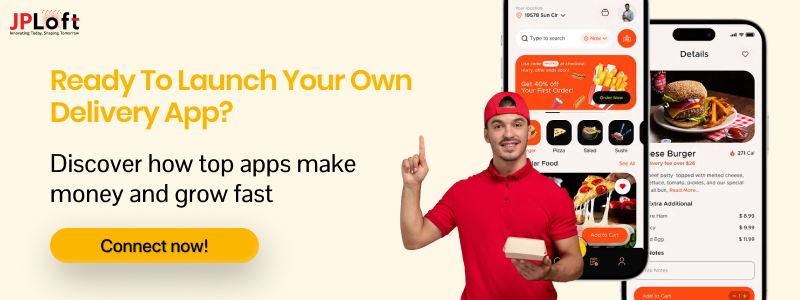
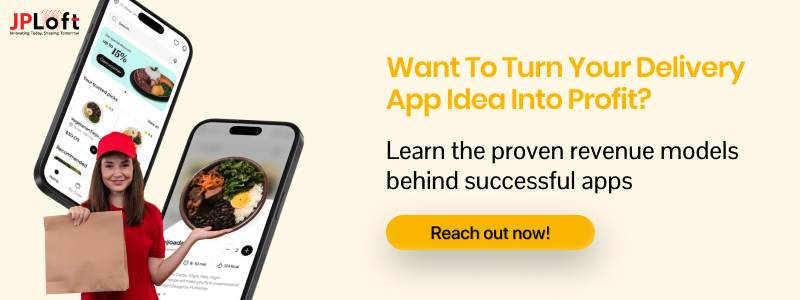

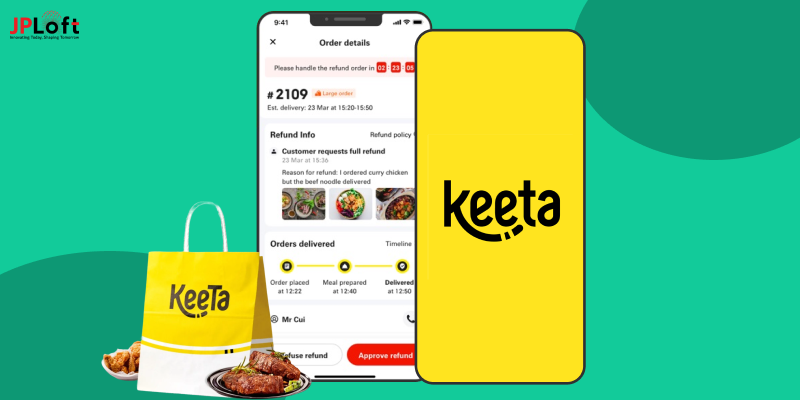
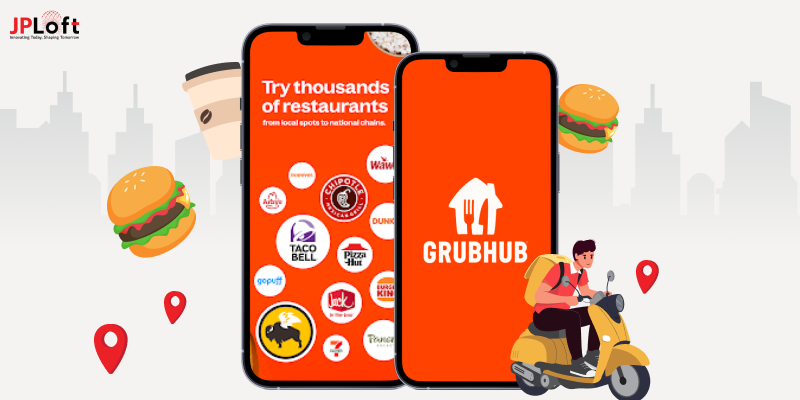
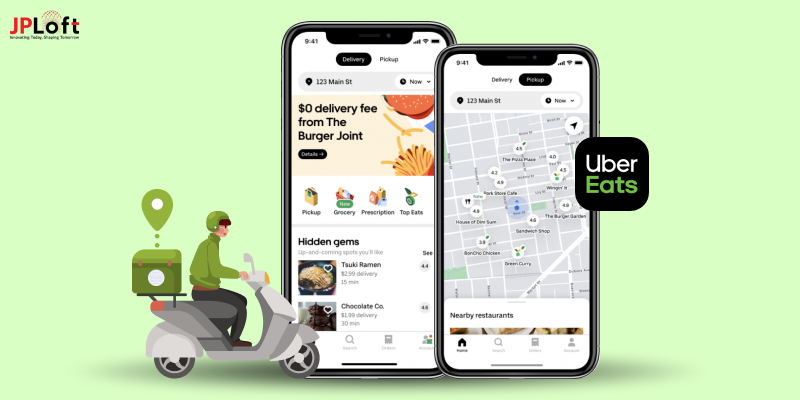


Share this blog